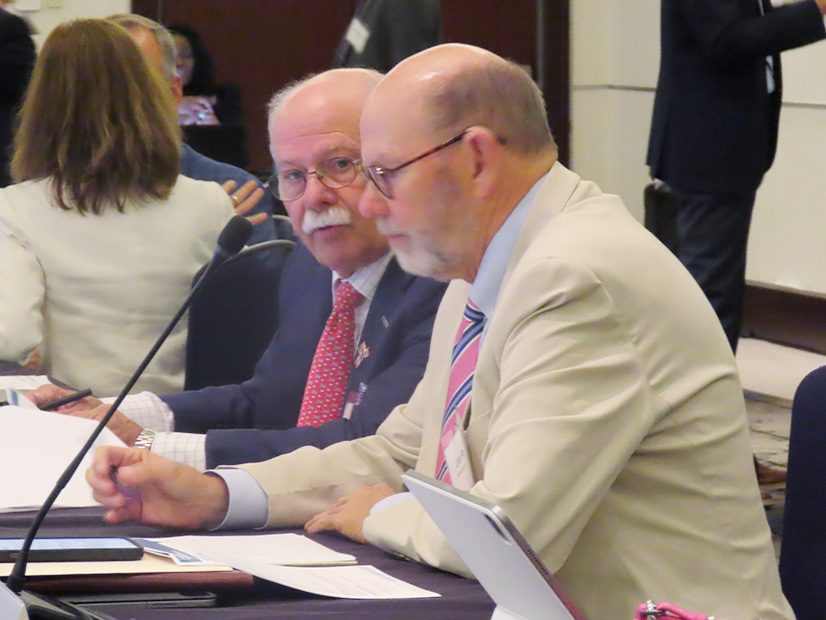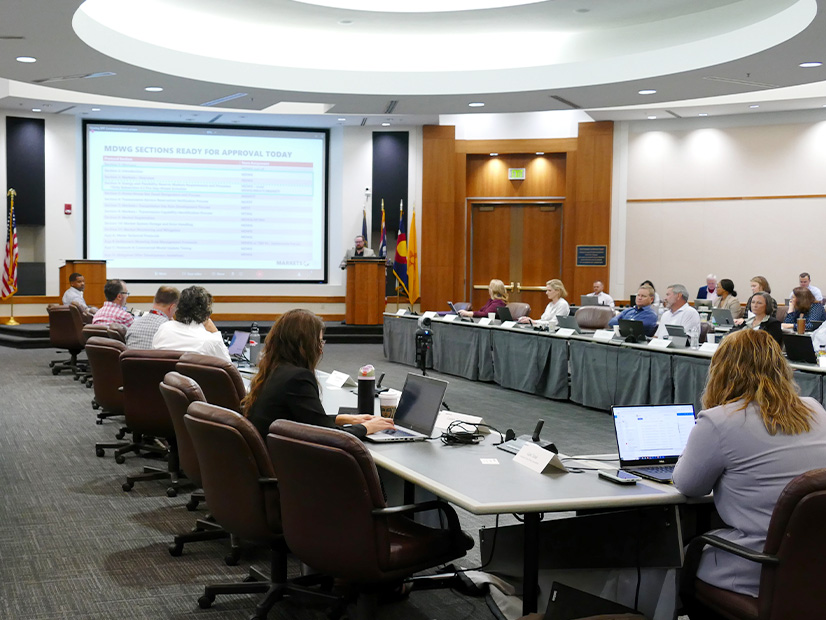Board Invokes Standards Authority to Meet IBR Deadline
VANCOUVER, British Columbia — NERC’s Member Representatives Committee and Board of Trustees met Aug. 15 for their final in-person gatherings of the year.
With a FERC-imposed deadline rapidly approaching for the submission of reliability standards governing ride-through performance of inverter-based resources, the board for the first time invoked its authority to streamline the ERO’s stakeholder approval process.
FERC ordered NERC in October 2023 to submit reliability standards addressing IBR performance requirements and IBR disturbance monitoring data sharing and post-event performance validation by Nov. 4, 2024. (See FERC Orders Reliability Rules for Inverter-Based Resources.) NERC assigned the development work to three ongoing standards development projects, which produced five draft standards:
-
- PRC-028-1 — Disturbance monitoring and reporting requirements for inverter-based resources;
- PRC-002-5 — Disturbance monitoring and reporting requirements;
- PRC-029-1 — Frequency and voltage ride-through requirements for inverter-based resources;
- PRC-024-4 — Frequency and voltage protection settings for synchronous generators, Type 1 and Type 2 wind resources, and synchronous condensers; and
- PRC-030-1 — Unexpected inverter-based resource event mitigation.
Four of the proposed standards have met the two-thirds weighted stakeholder approval needed for submission to FERC, but at the time of the board meeting, PRC-029-1 had again failed to receive approval in its most recent formal ballot round that ended Aug. 12. With the deadline less than three months away, board Chair Kenneth DeFontes said “it’s not clear NERC’s usual process can produce a consensus standard.”
“NERC has a regulatory responsibility to file reliability standards addressing [FERC’s order] by Nov. 4, but equally important is [that] it’s the right and necessary thing to do,” DeFontes said. “The board needs to consider taking special action to get [the] IBR ride-through standard done on time.”
The resolution was recommended to the board by the Regulatory Oversight Committee (ROC) in its meeting Aug. 14. Using the board’s authority under Section 321 of NERC’s Rules of Procedure, it directed the Standards Committee to convene a technical conference Sept. 4-5 in the ERO’s D.C. office.
NERC will use input from the technical conference to revise the proposed standard, which will be submitted for stakeholder ballot. If it receives a two-thirds weighted stakeholder approval, the standard will be considered approved; the board still may consider adopting the standard if it receives at least 60%, though an additional comment period and technical conference may be needed.
“Over the years, the board has seen industry rise to the occasion time and time again to address tough issues and FERC directives through NERC’s standard development process,” DeFontes said. “We’ve said before that stakeholder input is essential to the success of the ERO model, and that remains true. The ROC’s recommendation … is to focus our stakeholder efforts for one final push [toward] developing a consensus standard. … I encourage our drafting teams and stakeholders to continue to participate and bring their knowledge and unique perspectives to this process.”
Budgets Headed to FERC
Additional actions at this week’s meetings include the acceptance of NERC’s 2025 Business Plan and Budget, along with those of the regional entities and the Western Interconnection Regional Advisory Body. The budgets will be submitted to FERC for approval.
The final business plans and budgets are “materially consistent” with NERC’s three-year projection, CFO Andy Sharp told the Finance and Audit Committee at its open meeting Aug. 14. NERC, the REs and WIRAB will see their combined budgets increase 9.1% over their 2024 levels to $304.6 million, while the collective assessment will grow 12.2% to $270.9 million; NERC’s budget alone is set to grow to $123 million, up 8.2% over 2024, while the assessment will rise 11.8% to $108.4 million.
MRC Elections to Begin in December
Nominations for the MRC’s officers will open Sept. 18 and close Oct. 17, Chair Jennifer Flandermeyer said during the committee’s meeting. Officers will be elected by current members Nov. 13 at the MRC’s final meeting of the year, which will be held in a hybrid format with only members attending in person.
Meanwhile, nominations to replace members whose terms expire next February will open Sept. 4 and close Dec. 1. The election will run Dec. 2 to 11.
Trustee Larry Irving, chair of the board’s Nominating Committee, also shared an update on the search for a trustee to succeed Bob Clarke, who will leave the board at the expiration of his term in February 2025. Clarke has served on the board since 2013, making him ineligible for renomination.
Irving reported that the Nominating Committee has selected a search firm to assist with the recruitment and “reviewed an initial pool of candidates” that he called “outstanding.” He said the committee plans to recommend a candidate to the MRC in December, with the election to take place next February.



